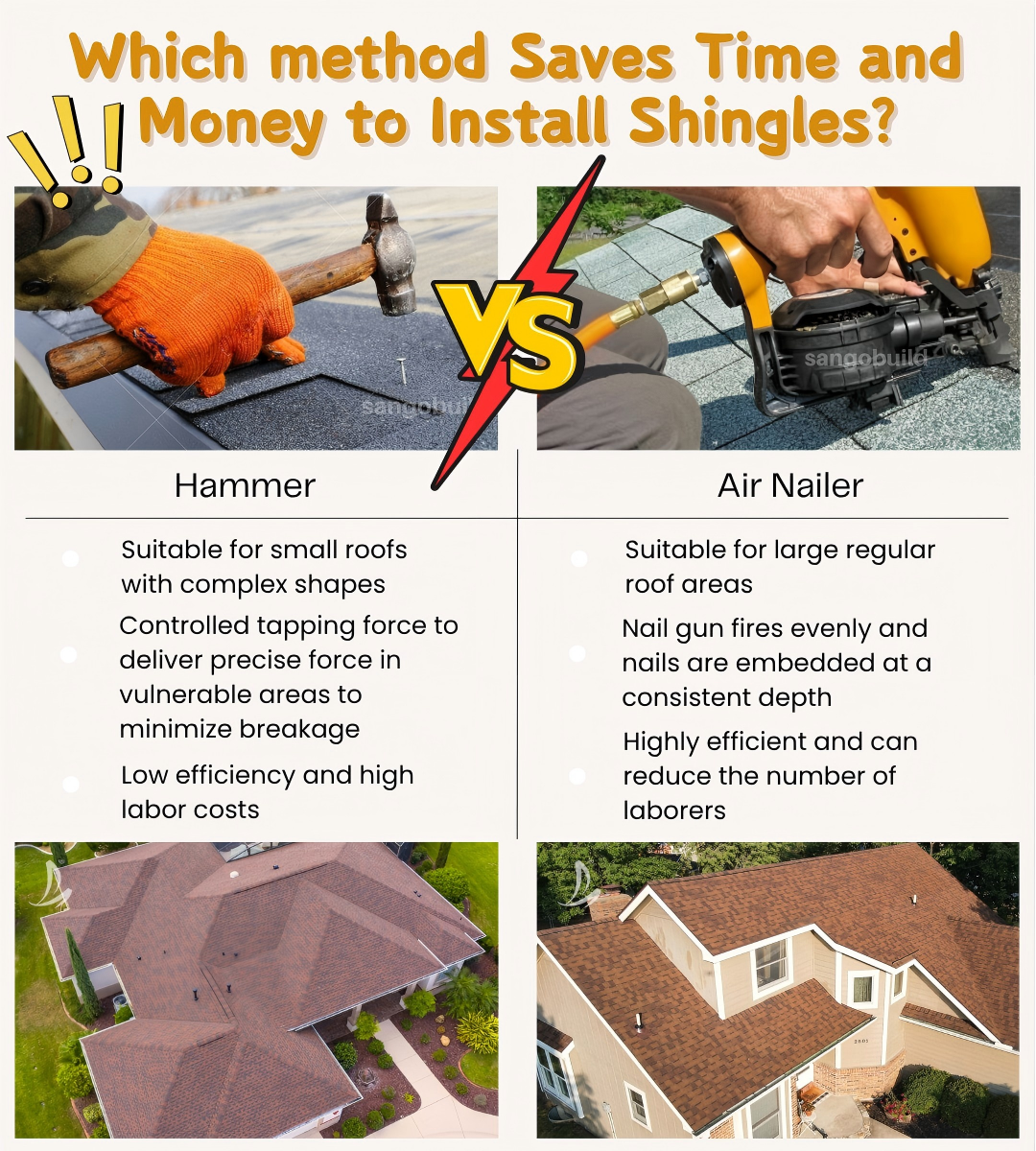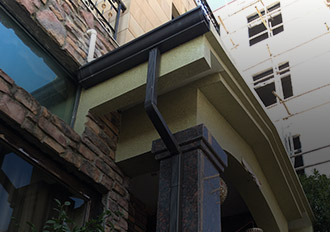THE LATEST IN ROOFING

When it comes to asphalt shingle installation, choosing the right fastening method directly impacts efficiency, quality, and project costs. The debate isn't about which tool is universally "better," but rather which is the most appropriate for a specific project's requirements and budget. Below is a detailed comparison between using an air nailer and a manual hammer, to help you make informed decisions based on your specific project needs:
1. Efficiency & Construction Speed
Air Nailer:
They are designed for rapid firing, allowing a roofer to drive nails with a simple pull of the trigger, which is significantly faster than the repeated motion of hand-nailing. Driven by compressed air, it allows rapid fastening, skilled workers can lay 200-300㎡ per day, ideal for tight schedules.
Manual Hammer:
Relies on manual force, with 4-6 nails per shingle, speed is much lower (80-150㎡ per day) due to physical fatigue. For smaller jobs or those requiring intricate detail work, an experienced roofer with a magnetized hammer can hand-nail shingles remarkably quickly.
2. Fastening Quality & Consistency
Air Nailer:
Uniform striking force ensures consistent nail depth, reducing risks of loose nails (water leakage) or over-tightening (shingle cracking). However, an improperly adjusted gun is a common source of problems. Too much pressure can over-drive nails, breaking the shingle's seal and creating leak points, while too little pressure results in loose shingles vulnerable to wind uplift.
Manual Hammer:
Workers control force manually. An experienced roofer can feel the nail driving into the roof deck, allowing them to adjust the force and ensure perfect depth without over-driving, which can damage shingles, allowing precise operation on fragile areas (e.g., edges, around chimneys) to minimize damage. This method is often praised for its craftsmanship and is a selling point in high-wind areas.
3. Suitable Scenarios
Air Nailer works best for: Professional contractors
-Large, regular-shaped roofs (e.g., flat or uniformly sloped roofs);
-Time-sensitive commercial projects;
-Wood or light steel substrates (easy for nail penetration).
Manual Hammer is preferable for: Homeowner
-Small repairs, renovations, or complex roof structures (e.g., dormers, chimney surroundings);
-Hard substrates (concrete, masonry) or fragile shingles;
-Remote sites without power/air compressor access.
For large-scale, standardized projects with tight deadlines, pneumatic nail guns offer efficiency and consistency. For small, detailed, or challenging sites, manual hammers provide flexibility and precision. Whichever method you choose, ensuring proper nail length and adherence to manufacturer guidelines is key to ensuring waterproofing and durability.
If you need further advice tailored to your project, feel free to share details—We'd be happy to assist!



REQUEST A QUOTE
Copyright © Hangzhou Singer Building Materials Co., Ltd. All Rights Reserved |
Sitemap
| Powered by 
SEOKeywords:Roof Tile ManufacturerRoof Shingle ManufacturerAsphalt Shingle SupplierRain Gutter CompanyShingle Roofing CompanyWaterproof Tape For RoofPressed Steel Roofing TilesRain Gutter SystemGray Asphalt ShingleStone Coated Metal Roofing Manufacturer